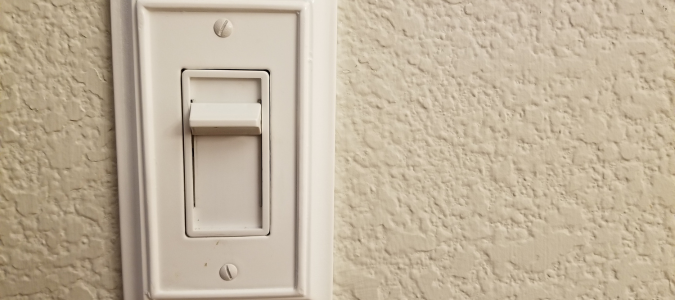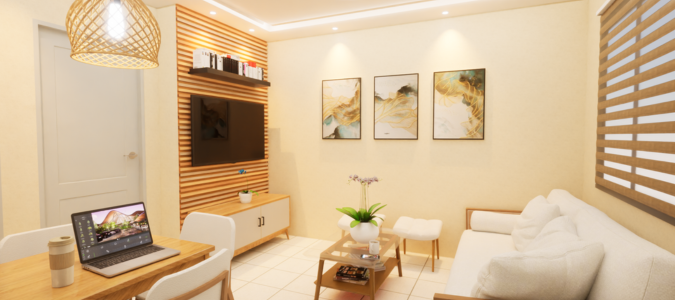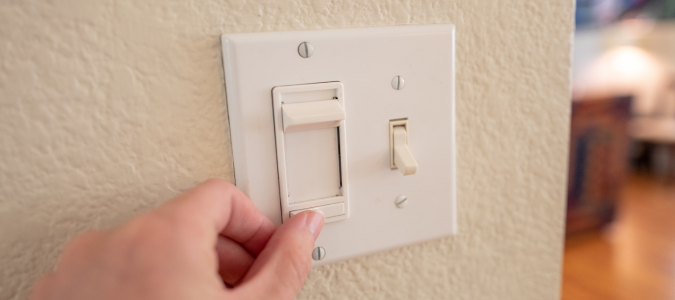Homeowners can be hands-on about many things around the house, but electrical work should be handled by a professional. The dimmer switch is one electrical component that could give you problems at home. You might find that it’s not dimming all the way or won’t work with some lights. If your dimmer switch is stressing you out, we’ll explain how this device works and how to troubleshoot common issues.
Let electricians come to the rescue if you can’t figure it out. These licensed professionals have the tools and expertise to solve the electrical mysteries that could be bugging you at home.
What Is a Dimmer Switch and How Does It Work?
It wasn’t until the 1930s that incandescent dimmers entered the picture, used in theaters to set the mood for different scenes. They had massive panels that required manual operation, a far cry from the modern dimmers.
Fast forward 30 years, dimming technology has made its way into our homes and has advanced since then. Today, the universal dimmer is a home essential that makes our lives more convenient. Universal dimmers developed from traditional incandescent dimmers out of necessity as new technology like CFLs and LEDs became the standard. They are an energy-efficient upgrade from their predecessor and boast better performance.
So, how does a dimmer switch work? It controls the brightness of light fixtures by regulating the amount of electrical energy that flows to the bulb. A component called a triac is responsible for this. It’s a switch that works at lightning speed, turning on and off a hundred times in a second.
When you turn a dimmer switch to maximum brightness, the triac keeps the power on almost the whole time to supply the bulb with the necessary electrical energy. But when you set the dimmer switch to low, the triac keeps the power off for longer. That way, the bulb receives less electrical energy, giving off a weaker glow.
Universal dimmers usually have a microcontroller that can understand the type of bulb you install, whether CFL, LED or incandescent. That allows the dimmer switch to adjust its operation according to the bulb’s technology and provide optimum performance. Universal dimmers are the preferred option in most homes for their versatility. While incandescent dimmers can sometimes work with dimmable CFL and LED bulbs, they might not be able to deliver consistent performance.
Benefits of Dimmer Switches
Do you always want bright lights in your home? While it’s great to see everything while cooking in the kitchen, not all areas must be ultra-bright. You want to be able to dim the lights and set the mood when you’re watching a movie with the family or winding down after a long day. With dimmer switches, you have complete control over functionality and ambiance in your space.
In addition, dimmer switches save energy and money. Your light fixtures don’t have to operate at maximum brightness all the time anymore. You can reduce their output voltage, lowering energy consumption and electricity bills. Dimmer switches also help your bulbs last longer because they’re not continuously operating at their highest intensity. They protect bulbs from excessive usage and heat, helping prolong their lives.
This device can be a beneficial addition to your home. If you want to control the ambiance in your space and lower your electricity bills, a licensed electrician can help you install dimmer switches. Never attempt to do this task yourself.
Why Is My Dimmer Switch Not Dimming All the Way?
Installing dimmer switches is an easy way to upgrade your living space and make it cozier. But as with all devices and appliances, they can malfunction at times. If your dimmer switch isn’t working as it should, here are some possible reasons and fixes.
You’re Using the Wrong Light Bulbs
If you connected your dimmer switch to existing light fixtures, there might be a compatibility problem. Dimmer switches typically don’t work with energy-saving or fluorescent light bulbs. Unless the packaging says it’s compatible with those light bulb types, you should buy traditional incandescent light bulbs to get your dimmer switch to work. It’s an easy fix and should be one of the first things you should check before looking at other causes.
It’s Overloaded
If your dimmer switch isn’t dimming all the way or can’t at all, it might be overloaded. All the energy in the circuit might be preventing it from functioning properly. One sign that it’s overloaded is if it feels hot to the touch. Not only is this an inconvenience, but it could also be dangerous. Never ignore a hot dimmer switch because it can break down from the heat and pose a fire risk. It can also melt the wire coating and affect insulation, leading to a possible short circuit or arc fault.
If you suspect overloading, contact a licensed electrician. The electrician will determine the maximum load for your dimmer switch and make the necessary adjustments.
There’s an Interruption in the Electrical Current
Dimmer switches work by controlling the electrical current flowing to the light fixture rapidly. You can’t see it with your naked eye, but the light flickers instead of dimming. If there’s an interruption in the electrical flow, the dimmer switch can’t function properly. You can tell this is the case if the bulb’s filament is vibrating and humming.
You can remedy this problem by changing the lightbulb or reducing the wattage level connected to the dimmer switch. If those don’t work, you might have to replace the dimmer switch altogether. Ask a pro to help you out with that.
There’s Physical or Water Damage to the Dimmer Switch
If you were moving furniture around your home recently, you might have unknowingly hit and damaged your dimmer switch. A physical impact might have damaged internal components or disconnected a wire. Water damage is another possible reason for a malfunctioning dimmer switch. Floods, burst pipes and accidental spills can all lead to a short circuit.
Let a licensed electrician address physical or water damage to a dimmer switch. They can also help you with other electrical issues, like understanding what a GFCI outlet is and how it works.
Why Do Some Lights Not Work With a Dimmer Switch?
Installing a dimmer switch is only half the equation if you want a cozier space. The other half is getting the right light bulbs to work with your dimmer switch. Some light bulbs, including fluorescent and energy-saving ones, aren’t compatible, so swap them out before connecting your dimmer switch. Aside from incompatibility, some light bulbs don’t work with a dimmer switch because of switch size and quality. It’s also possible that your dimmer switch is overloaded.
How to Find the Right Light Bulbs for Your Dimmer Switch
If you want your dimmer switch to work, you need dimmable light bulbs. If you’re in doubt, check the packaging of your dimmer switch and light bulbs. That should tell you which light bulb types the dimmer switch is compatible with and if your light bulbs fit the bill. A licensed electrician can help you sort things out if you’re still confused.
Generally, most incandescent lights should be compatible with dimmer switches. They are the traditional light bulbs made with glass and contain filaments inside. However, you might have a problem with LEDs. While they are popular among homeowners, not all work with dimmer switches. That’s because LED bulbs usually don’t have the correct wattage requirements. You might not be able to dim them as much as incandescent bulbs.
Before buying LED light bulbs, check the packaging to ensure they are compatible with your dimmer switch. If you already have an older dimmer switch at home, it will likely not work with LEDs. You probably have to upgrade your dimmer switch if you’re replacing your traditional bulbs with modern LEDs.
If your dimmer switch isn’t compatible with your light bulbs, look out for these telltale signs. Your lights might cut off at certain brightness settings. They might also suddenly brighten or dim without you doing anything or not be responsive to setting changes. Rapid flickering, buzzing and humming are other warning signs. Consult a licensed electrician if you notice any of these. The electrician will identify the cause of the issue and make the necessary adjustments or replacements.
Get Professional Help With Your Lighting Problems
If you’re installing a dimmer switch at home, save yourself the headache and call in a licensed electrician. That way, you don’t have to worry about compatibility and safety hazards. The electrician will help you choose the correct light bulbs and ensure everything is working smoothly.
Electricians can also help you with other electrical issues you’re dealing with. If you’re wondering why you have a hot light switch, a professional can help.
ABC Can Fix Your Lighting Problems
It can be annoying and expensive to deal with a hot light switch. Instead of dealing with electrical issues, contact ABC Home & Commercial Services. Our pros will diagnose the cause of the problem and then make all needed repairs. They can also help with other electrical issues, like if your GFCI keeps tripping.



